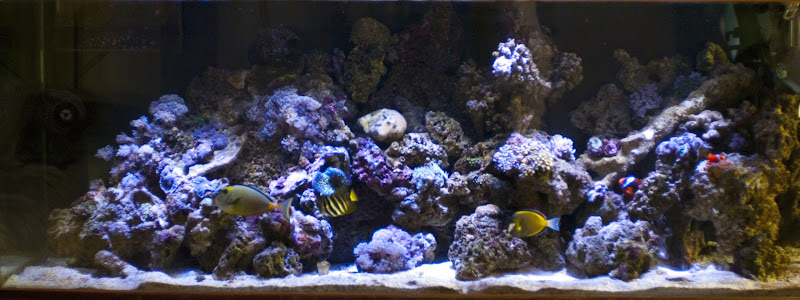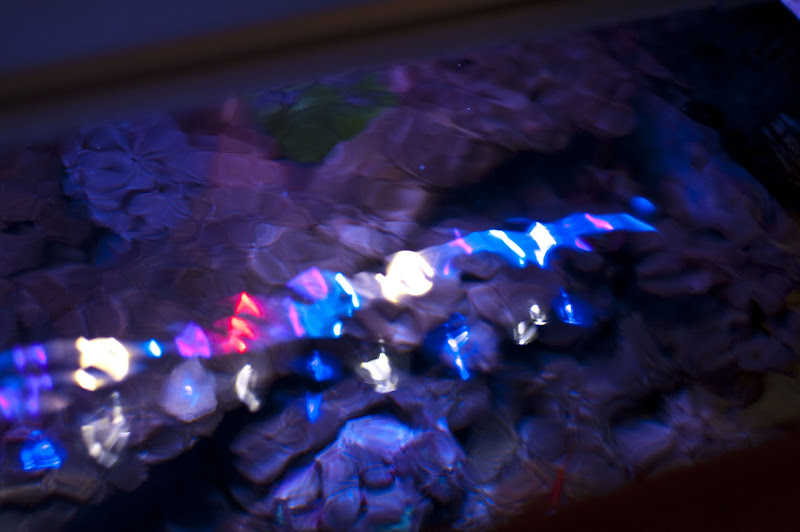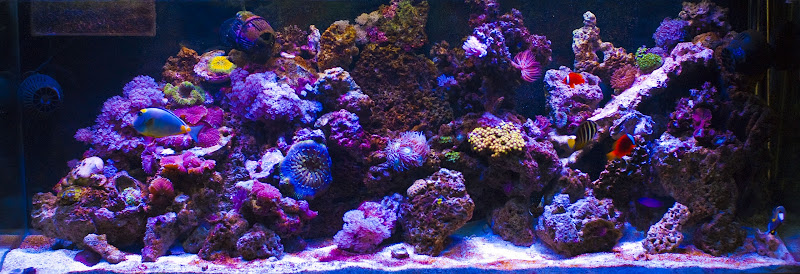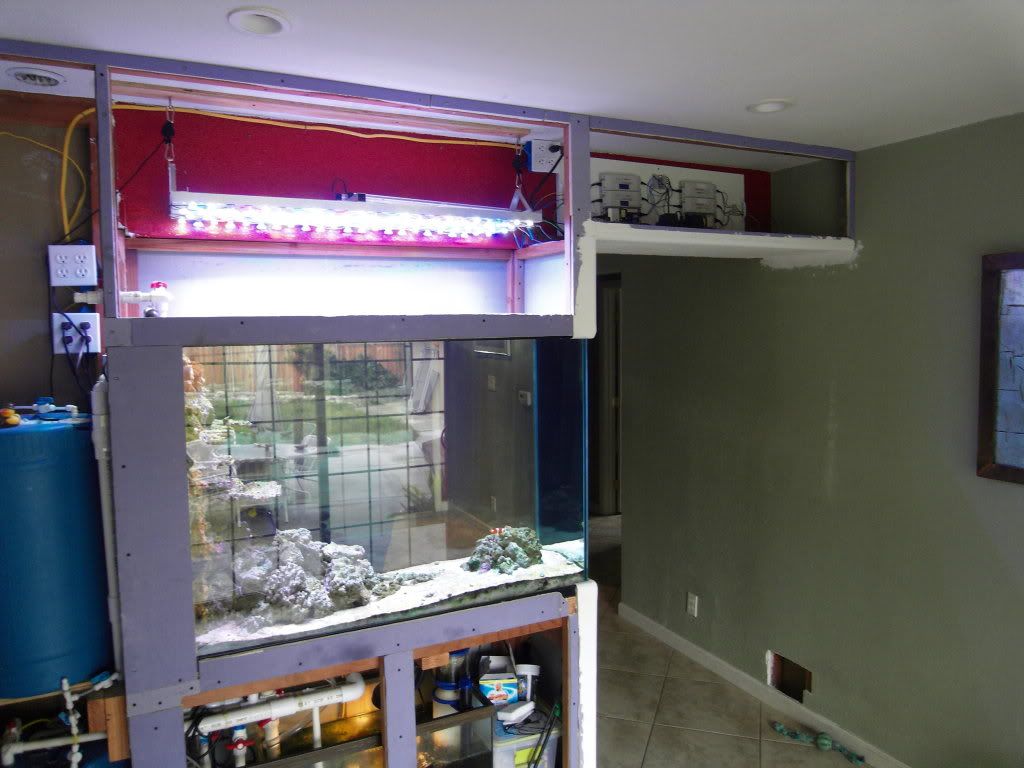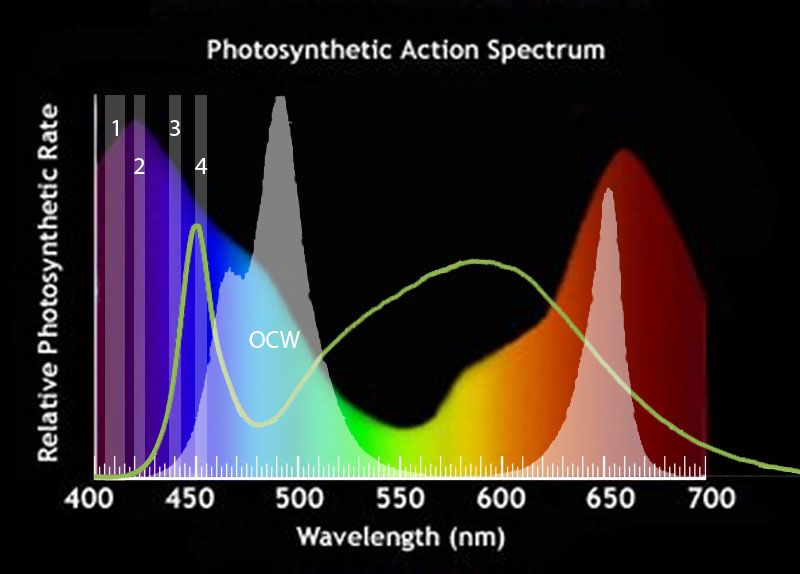HiFidelity
Guest
Hi Gang,
I will begin with addressing the title and overall objective
Title:
-Open ended discussion for any and all to chime in with any ideas and/or first hand experiences/experiments.
-Full Spectrum LED lighting; for all intended purposes we will be strictly focusing our attention on the light spectrum absorbed/used up by corals under sea water, not to confuse the conventional meaning of "full spectrum" and that is the full range of sunlight. It seems that achieving Full Spectrum output has quickly become the holy grail of LED lighting, you can notice a trend with commercial brands over the past couple of years shifting from a blend of Royal Blue & Cool White to Full Spectrum, employing the use of yellows, reds, greens as well as violets. This combination was rarely seen in older production, and that's exactly the type of light configuration we are going to discuss.
Objective:
-Explore and expand on the most up to date concepts detailed or described by others from this or any other forum on the web.
-Explore newest available (for purchase) products on the market in comparison to the pool of successfully employed current technologies.
-Address the advantages and disadvantages of full spectrum vs. other common configurations.
-Create a platform on which we can expand and elaborate collectively for the mutual benefit of the club without an end date or timeline so the topic can hopefully evolve as we go along.
Intro:
I have found our little haven of awesomeness we call BAR to be one of the most well versed databases of knowledge (discussed on the forum and through the events & meets) when I started with my current tank I found BAR to be the one-stop-shop to answer some of the most important questions in the hobby, and with great accuracy. Therefore I would like to contribute to this big ball of greatness with some info for all members to enjoy, specifically on a topic that is very important in our world of Reef Tanks (of course with some help).
So I am one of those people who's brain works like a jig saw puzzle, I can't really approach things simply out of curiosity or sheer desire, I must first assemble an ample amount of knowledge pre-hand before I delve into anything new and needless to say that can be infinitely complex when we're talking LED's. So basically I'm constantly researching and studying available data from previous studies and experiments from any and every source I can find on the net as well as others in the hobby.
Without too many confusing details I'll begin with a basic full spectrum configuration;
2:1 RB:NW (or close to it)
Neutral White (NW) comprising of a spectral range of 4500K-5000K
Supplement Warm White (CW) lighting of a spectral range of 3000K-4000K
Supplement Violet, spectral color of 400-420nm
Supplement lighting covering 400nm-700nm to target the range utilized through Photosynthetic Absorption (OCW LEDs come to mind)
Brand & model of LED based on tank dimensions, depth, type of inhabitants as well as personal preference
These figures and ratios are in my opinion targeted to provide good light output for photosynthetic absorption of the zooxanthellae, specifically in relation to the chlorophyll a and chlorophyll c pigments, simply put "to grow healthy corals"
There are also carotenoids which are the second reason for the 400nm-700nm supplementation, this chart paints a good picture;
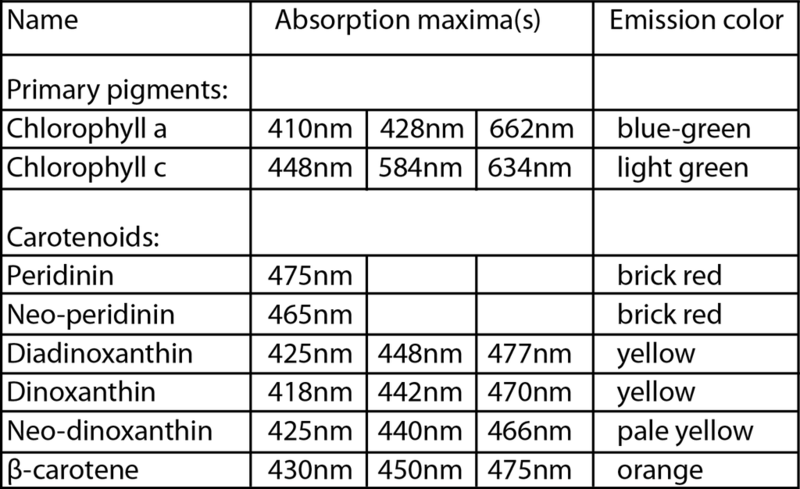
Of course we need a useful graph that shows the corresponding colors for each of the numbers mentioned;
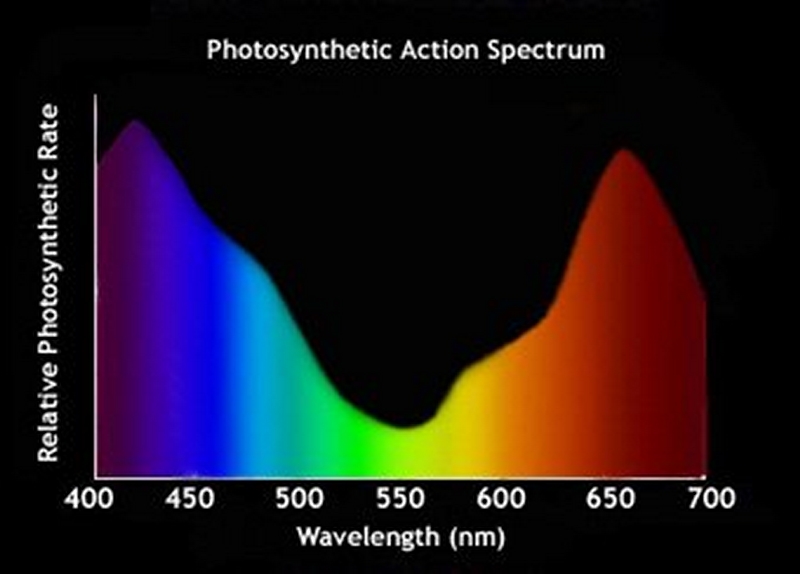.jpg)
I specifically did not list LED models or number, but rather I wanted to quickly include a baseline ratio of LED colors for whoever stumbles across this thread through search or otherwise. This way they can get the first question (what color LEDs should I have?) about full spectrum answered in the first post. These recommendations are subject to change as the discussion evolves since this should be a collective effort so hopefully we form a more accurate hypothesis.
I have soooo much to share with you guys; data, graphs, studies, and of course other discussions but I just realized that this is becoming very lengthy already so for the sake of avoiding info overload I feel this is a good start.
So enough from me, how about we get your feet wet with a couple of hot questions being widely posed and debated recently;
Full Spectrum vs Dominantly Blue Lighting (on the left of the spectrum, ie; the 20000k look), which is really better for optimal coral growth? and why?
Remember that a full spectrum system would employ a lot of neutral white LED's (like the ratios listed above) and blue-look would be the often commercially favored 2:1 RB:CW blend.
LED Sources:
http://www.ledgroupbuy.com/
http://www.rapidled.com/
I will begin with addressing the title and overall objective
Title:
-Open ended discussion for any and all to chime in with any ideas and/or first hand experiences/experiments.
-Full Spectrum LED lighting; for all intended purposes we will be strictly focusing our attention on the light spectrum absorbed/used up by corals under sea water, not to confuse the conventional meaning of "full spectrum" and that is the full range of sunlight. It seems that achieving Full Spectrum output has quickly become the holy grail of LED lighting, you can notice a trend with commercial brands over the past couple of years shifting from a blend of Royal Blue & Cool White to Full Spectrum, employing the use of yellows, reds, greens as well as violets. This combination was rarely seen in older production, and that's exactly the type of light configuration we are going to discuss.
Objective:
-Explore and expand on the most up to date concepts detailed or described by others from this or any other forum on the web.
-Explore newest available (for purchase) products on the market in comparison to the pool of successfully employed current technologies.
-Address the advantages and disadvantages of full spectrum vs. other common configurations.
-Create a platform on which we can expand and elaborate collectively for the mutual benefit of the club without an end date or timeline so the topic can hopefully evolve as we go along.
Intro:
I have found our little haven of awesomeness we call BAR to be one of the most well versed databases of knowledge (discussed on the forum and through the events & meets) when I started with my current tank I found BAR to be the one-stop-shop to answer some of the most important questions in the hobby, and with great accuracy. Therefore I would like to contribute to this big ball of greatness with some info for all members to enjoy, specifically on a topic that is very important in our world of Reef Tanks (of course with some help).
So I am one of those people who's brain works like a jig saw puzzle, I can't really approach things simply out of curiosity or sheer desire, I must first assemble an ample amount of knowledge pre-hand before I delve into anything new and needless to say that can be infinitely complex when we're talking LED's. So basically I'm constantly researching and studying available data from previous studies and experiments from any and every source I can find on the net as well as others in the hobby.
Without too many confusing details I'll begin with a basic full spectrum configuration;
2:1 RB:NW (or close to it)
Neutral White (NW) comprising of a spectral range of 4500K-5000K
Supplement Warm White (CW) lighting of a spectral range of 3000K-4000K
Supplement Violet, spectral color of 400-420nm
Supplement lighting covering 400nm-700nm to target the range utilized through Photosynthetic Absorption (OCW LEDs come to mind)
Brand & model of LED based on tank dimensions, depth, type of inhabitants as well as personal preference
These figures and ratios are in my opinion targeted to provide good light output for photosynthetic absorption of the zooxanthellae, specifically in relation to the chlorophyll a and chlorophyll c pigments, simply put "to grow healthy corals"
There are also carotenoids which are the second reason for the 400nm-700nm supplementation, this chart paints a good picture;

Of course we need a useful graph that shows the corresponding colors for each of the numbers mentioned;
.jpg)
I specifically did not list LED models or number, but rather I wanted to quickly include a baseline ratio of LED colors for whoever stumbles across this thread through search or otherwise. This way they can get the first question (what color LEDs should I have?) about full spectrum answered in the first post. These recommendations are subject to change as the discussion evolves since this should be a collective effort so hopefully we form a more accurate hypothesis.
I have soooo much to share with you guys; data, graphs, studies, and of course other discussions but I just realized that this is becoming very lengthy already so for the sake of avoiding info overload I feel this is a good start.
So enough from me, how about we get your feet wet with a couple of hot questions being widely posed and debated recently;
Full Spectrum vs Dominantly Blue Lighting (on the left of the spectrum, ie; the 20000k look), which is really better for optimal coral growth? and why?
Remember that a full spectrum system would employ a lot of neutral white LED's (like the ratios listed above) and blue-look would be the often commercially favored 2:1 RB:CW blend.
LED Sources:
http://www.ledgroupbuy.com/
http://www.rapidled.com/
Last edited:






